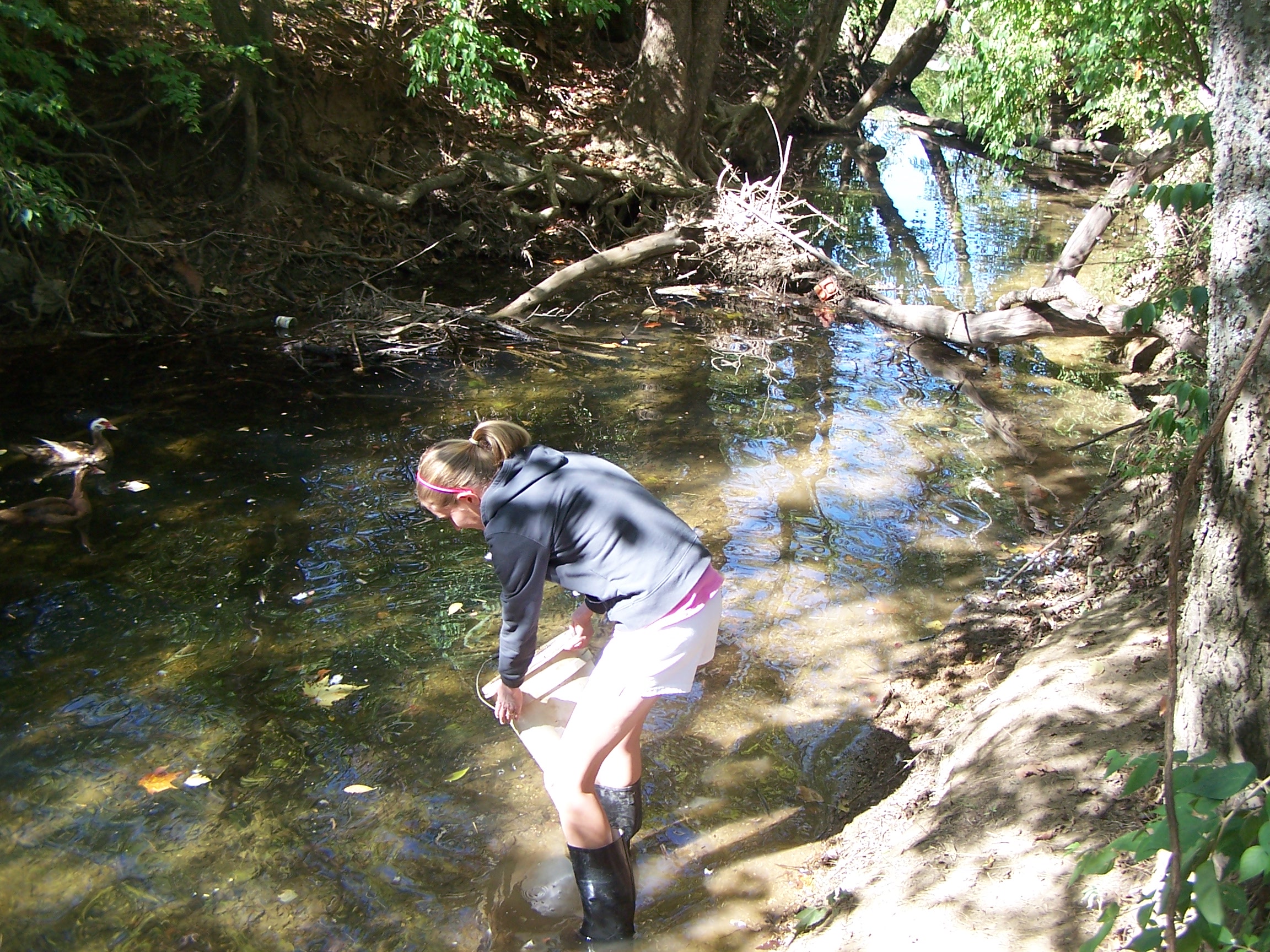When Elizabeth McGlasson moved into her Hickory Brook townhouse a year ago, she met "Marge," who would become a curiosity and, later, a motivation for the East Brainerd resident.
"I don't know how old a turtle has to get to be that big. She's massive," McGlasson said of her "neighbor."
With work now in progress to replace the concrete-lined stream Marge inhabited, she has since moved on, according to McGlasson.
"Nobody's really seen her since," she said. "[Construction workers] said they saw something moving over in the fill-in section [of the creek] and when they went over to see what it was, this turtle was just covered in that dirt. They picked her up and took her to the water. They said she was huge. I thought 'I bet that's her.' Marge is out there somewhere."
To help others like Marge escape the site, which is being filled in with dirt as a new natural creek is created, McGlasson and a handful of local volunteers are partnering with state nonprofit and project overseer Tennessee Stream Mitigation Project. They have two removal days scheduled this month as the stream relocation portion of the project wraps up, although all the work won't be complete until around Thanksgiving, depending on the weather.
"The fish didn't get told what was happening," McGlasson said, although acknowledging that residents did. "They didn't get their eviction notice. They don't understand. These animals just don't have to die. It's so sad because they don't have a chance."
TSMP project manager Rob Bailey said his team made efforts under the applicable environmental standards to remove wildlife from the area and place rescued animals in the new stream. He estimated that within one year the population numbers will be the same due to transplants as well as new creek residents.
"The public's perception is that we didn't live up to the highest environmental standards," he said. "For some people the perception was that we didn't do anything. If we did anything how could there be so many fish left that were dying in my backyard? We absolutely cared at every step of the process exactly what we were doing and what the impact was."
Under the Endangered Species Act, special attention must be paid to the removal of endangered species. In this case that means Chickamauga crayfish.
"There is a misperception that only endangered and threatened and rare species are protected by federal and state law, and that's not true," Bailey said. "At no time did anybody ever indicate that other species were not important or not protected."
However, he acknowledged that doesn't mean every single animal can and will be saved. Environmental laws and standards account for this, he added.
"It's unfortunate but, even in the end result to improve a stream to take it from a concrete-lined, contaminated ditch and turn it into a more natural, higher-quality habitat meandering stream, there are some species that are going to be lost," he said. "It's not pleasant and it's not a glamorous side. Sometimes it's not even acceptable to people who don't understand all the science and process that goes into this."
This determination is based on species' characteristics, prevalence and geographic range. With no concrete numbers on how many must be saved, Bailey, who's been doing stream improvement projects for more than a decade, said it's a personal judgment call each and every time based on this criteria as well as continued removal cost and time.
McGlasson estimated that over a previous, unauthorized weekend of work by residents, "probably 1,000 things got fished out of the creek if you count every thing as a thing."
Although Bailey couldn't personally save all the wildlife, he has helped the group wade through waves of red tape from the city, construction and insurance companies to allow the volunteers on-site.
"Absolutely every organization involved in this was immediately supportive of using these volunteers," he said. "There is huge support for the idea that we do want to try to save as much wildlife as we can."
